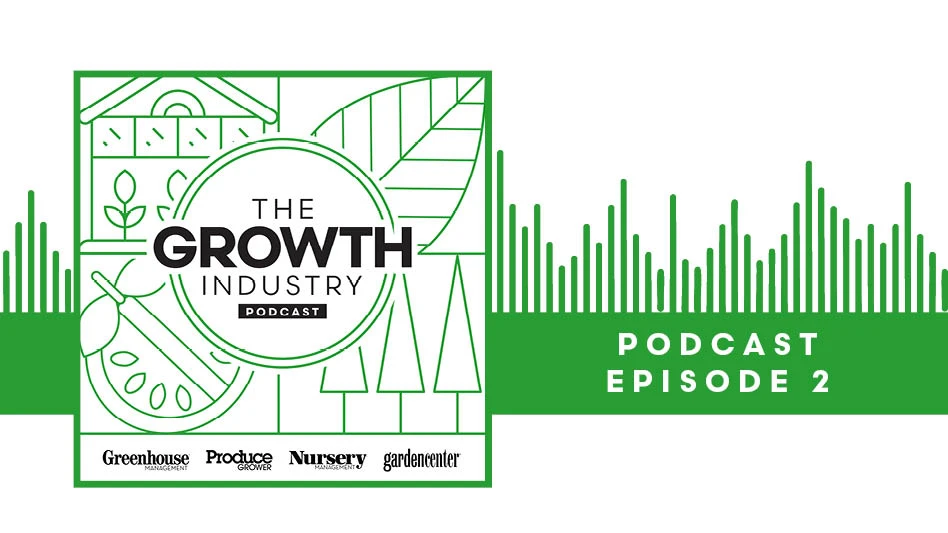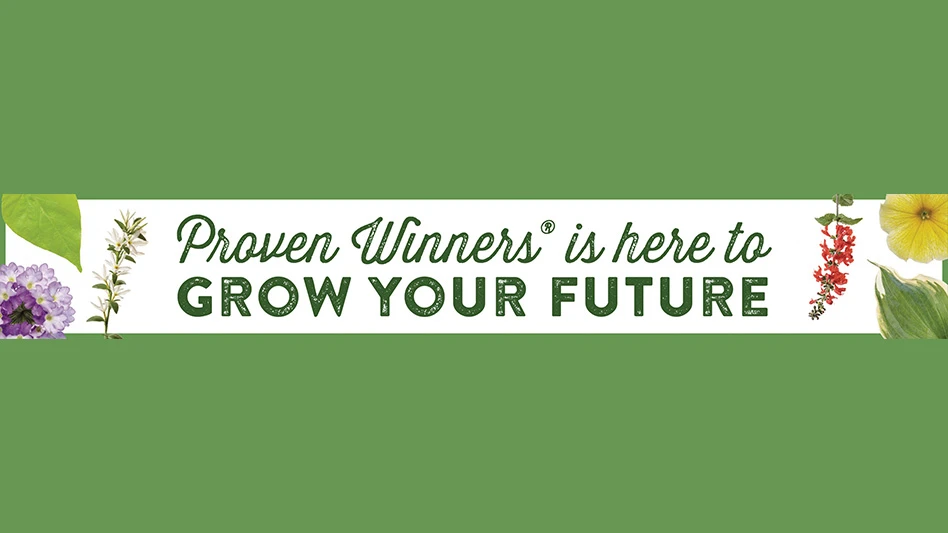
Many produce growers view greenhouse structures and hydroponic growing methods as improvements upon the volatile elements of working outdoors in soil. These structures and systems provide growers with the ability to control environmental factors and produce consistent yields year-round.
One factor that contributes to further success in the greenhouse, albeit requiring an investment and additional work, is supplemental lighting. Produce Grower talked to Matthew Kispert, horticulturist at CropKing, about the importance of this ever-popular technology. This interview has been edited for length and clarity.
Produce Grower: Why is supplemental lighting important for growers, and what should they know about it?
Matthew Kispert: The main thing supplemental lighting is going to do is maintain the speed of your crop once the light levels start diminishing. If you’re growing a long-term crop like tomatoes, you might start them seasonally, and then as the season starts waning, the light levels are going to decrease, and that’s going to cause a drop in your production. Traditionally, that’s when most growers are terminating their crop, once those light levels get below a certain point.
It really is an economic decision — whether or not to use lighting. It’s always been the biggest hang-up of supplemental lighting. Margins on vegetable production are already really low. You have to make a very conscious, well-thought out decision if you’re going to attempt to use supplemental lighting.
I think a lot of lighting companies tend to oversell the amount of light that they’re giving people. I think it’s really important, if you’re going to use supplemental lighting, to make the investment in getting a light meter and going through and checking your greenhouse to see just what your light levels are so you know exactly how much light you need to add. It’s very easy to add too much light or not do it appropriately where you don’t have good coverage and then it defeats the point. Light is something that needs to be given a little bit more thought than simply buying a bunch of fixtures and throwing them up around the greenhouse.
Supplemental lighting goes hand-in-hand with CO2 use. Photosynthesis — you’re utilizing carbon dioxide. Generally speaking, carbon dioxide is the limiting factor in photosynthesis, so it is really important to know what the CO2 levels in your operation are like, and monitor those as well, because you could be wasting money on lighting if you simply don’t have enough CO2. Or you might be able to get better growth by more economically increasing the CO2 in your environment as opposed to increasing lighting. It’s one of those things where it’s important to be aware of the correlation between the two. And if you’re going to give one, you’ll get more bang for your buck if you’re providing both. Or, since CO2 in a greenhouse is the limiting factor, start with CO2 supplementation, and then you might consider adding more lighting to make better use of the available CO2.
Matthew Kispert, horticulturist at CropKing
PG: In your experience, what different results would growers get if they’re using LEDs versus HIDs or fluorescent lights? Depending on the light, how is that going to determine the outcome?
MK: I would say they’re all pretty specific to their uses. Fluorescent lights are fantastic for vegetable production. Fluorescent lights unfortunately don’t have very high intensities, so they need to be very close to the crop, and they need to be relatively closely spaced together. When I say close to the crop, I mean [for] seedling production, you want your T5s eight inches off the top of the plant. For full-grown lettuce crops, you want them no more than two feet off the top of the crop. Unfortunately, when you get the appropriate densities needed for adequate light coverage with fluorescents, you create a lot of shading issues. Having that many fixtures hanging inside of your greenhouse is going to cause a lot of shading on your plants. Fluorescents are better utilized in sole-source lighting, as opposed to supplemental lighting.
You could say the same thing for LEDs, too, unless you really spend money on some high-output fixtures. In my experience, with most LEDs, the intensity just isn’t there yet. You need to have a lot of fixtures in order to adequately light a certain square footage. Then, you come into the question of how much structural shading am I putting on my crop just to have those lights hanging up.
And that’s kind of where HID lighting really shines, if you’ll mind the pun, [in] that they’re a lot more intense. You need fewer fixtures per square footage. As a result, there’s less shading. Your high-pressure sodiums are still, in my opinion, the go-to supplemental light source. I’m sure LEDs eventually are going to surpass everything. I have no doubt that the technology is going to take over. I just don’t believe it’s right there in a cost-effective manner just yet.
PG: You mentioned the potential issues from lighting above. What factors would growers want to consider if they’re using inter-canopy lighting? Is that something you would recommend?
MK: HortTechnology published research which suggests that it works really well. In that instance, you pretty much would need to use LEDs, just from a heat dissipation point of view. No other fixture can be put that close to the plant.
PG: Could you explain to me why it’s important to change your greenhouse’s poly covers for optimum light transmission?
MK: I’m not sure who really coined the phrase, but generally speaking, a one percent loss in light is a one percent loss in production for covered crops. Every year, your glazing material is going to fog, it’s going to get cloudier, the light percentage is going to go down, and as a result, your production is going to go down. Different glazing materials are going to react differently over time, so you have to keep an eye on that transmission point. That’s where having a light meter, too, can also help with that. You can easily have a light meter underneath your glazing and then move it to a location outside to see what your drop is. By keeping track of that percentage over time, you can get an idea of when you need to change your glazing materials.
For the most part, the number one thing that I’ve seen people do is neglect to clean their glazing. You’d be surprised by how much dirt and dust can accumulate on your glazing, and if you just wash it regularly, that can dramatically increase the transmittance of it. Making sure to seasonally wash the outside of your greenhouse as needed, after you have any construction nearby or anything that is going to kick a lot of dust up on your glazing material, it might be a good idea to try to spray it down, just to try to keep it clean.
PG: Would you say it’s effective to just clean the glazing materials rather than replacing them, or do you need to clean them at some point? If it’s the latter, how often you need to replace them?
MK: Ultimately, you’re going to need to replace it. For polyethylene films, most manufacturers are recommending replacing them every four years. For polycarbonate, eight to 10 years is ideal.
The mechanical aspect of those will far outlive the actual transmission aspect, so you could have a polyethylene film greenhouse and not change the film for 10 or 15 years because mechanically, the film is going to hold up, but it is going to decrease in light transmittance dramatically over that period of time. That’s a potential pitfall of using some glazing materials, people will think, ‘Oh, I don’t need to replace it.” By appearance, it’s still fine — it’s not full of holes or anything — so why replace it? But really, they need to be monitoring the production that they’re getting, so they can notice it if they need to replace it.”
Greenhouse photo: istockphoto.com; Matthew Kispert headshot courtesy of CropKing
Latest from Greenhouse Management
- pH Helpers
- Society of American Florists accepting entries for 2025 Marketer of the Year Contest
- Sustainabloom launches Wholesale Nickel Program to support floriculture sustainability
- American Horticultural Society welcomes five new board members
- Color Orchids acquires Floricultura Pacific, becoming largest orchid supplier in U.S.
- American Floral Endowment establishes Demaree Family Floriculture Advancement Fund
- The Growth Industry Episode 3: Across the Pond with Neville Stein
- 2025 State of Annuals: Petal power







